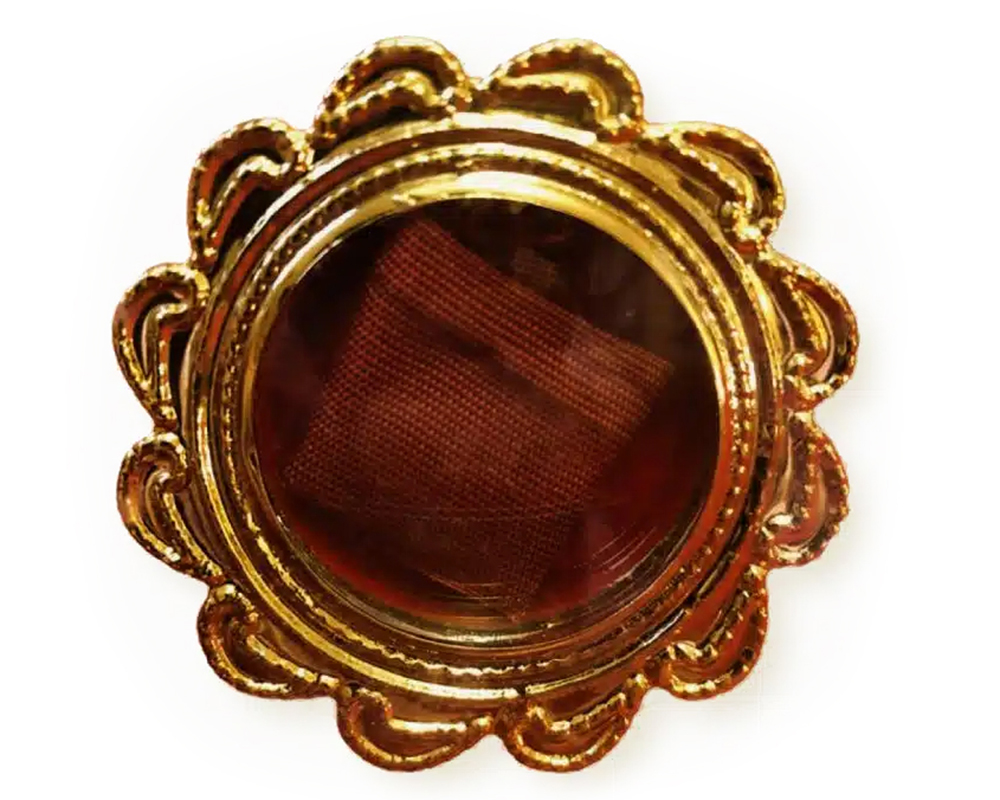North of Dayton
Among the relics added this past fall to the extensive collection at the Maria Stein Shrine of the Holy Relics was one of Marianist Sisters founder Blessed Adèle de Batz de Trenquelléon (aka Sister Marie of the Conception).

A piece of the casket that held her body was added to the collection of relics on display and rests next to a relic of Marianist family co-founder Blessed William Joseph Chaminade added in 2014.
Marianists at UD played a significant role in the acquisition of both.
Born June 10, 1789, in France, Adèle led the formation of the Daughters of Mary Immaculate, also known as the Marianist Sisters, in 1816. She was beatified in 2018.
The idea of placing a relic of Adèle next to that of Chaminade occurred to Brother Andrew Kosmowski, S.M., librarian at the North American Center for Marianist Studies at Mount Saint John near Dayton, during a visit he made to the shrine about an hour north of Dayton with a group of Boy Scouts for a retreat. Matthew Hess ’16, Maria Stein Shrine director of ministry, then mentioned the idea in 2022 to Sister Gretchen Trautman, F.M.I., provincial of the U.S. province.
Trautman contacted Marianist Sisters Superior General Sister Susanna Kim, F.M.I. Kim prepared a small piece of wood and cloth from the box in which Adèle was buried. The pieces together are considered a second-class relic, defined as material that has touched the blessed person’s body. A first-class relic would come from the saint’s body, such as a piece of hair, bone or a tooth.
“Relics are a reminder that the saints were actual people who lived out the Gospel in their own time and place,” Hess said. “The relics of the saints give us hope, knowing that God can work through us in the ordinary circumstances of our lives and heaven is attainable.”
A relic is not the type of material to send in the mail. In January 2023, Andre Tetis, Society of Mary superior general, flew with the relic on a trip from Rome to San Antonio, where Trautman lives. In March 2023, Trautman flew to Dayton for an event and hand-delivered the relic to Maria Stein.
“The relics of the saints give us hope, knowing that God can work through us in the ordinary circumstances of our lives and heaven is attainable.”
Hess said as he was gathering the newest group of relics, he looked for holy men and women who completed their work in the 19th and 20th centuries and who had connections to the Americas and the Midwest. Those related to religious orders working in the Archdiocese of Cincinnati, such as the Marianists, would fall under that umbrella.
“All but one — Blessed Adèle — was able to be photographed, which shows how they are modern examples of saints in which people can find connections,” Hess said.
A similar process took place in 2014 when UD helped the shrine obtain the Chaminade relic. Father James Fitz, S.M. ’68, UD vice president for mission and rector, said that after receiving a request from the shrine, he reached out to then-U.S. Provincial Father Marty Solma, S.M. ’71, to see where he could obtain one to donate.
Chaminade’s original casket had been cut into small pieces; a piece had been sent to each Marianist religious community around the world. Solma was able to obtain one of the relics from a community that had closed, and it was flown to the provincial headquarters in St. Louis and then to Dayton. Fitz later drove it to Maria Stein when he visited for a retreat.
The Maria Stein Shrine of the Holy Relics has one of the largest collections in the United States, with relics from more than 850 saints.